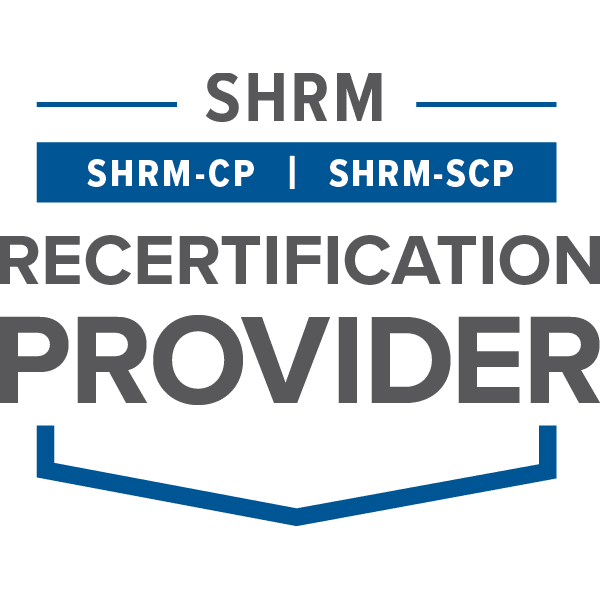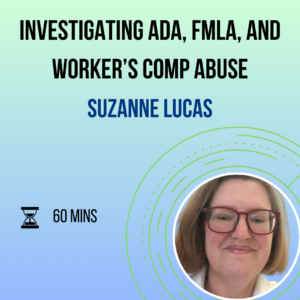Marketing and Empathy Psychology
DOL's 2024 New Rule Bundle Pack
Lorem ipsum dolor sit amet, consectetur adipiscing elit. Ut elit tellus, luctus nec ullamcorper mattis, pulvinar dapibus leo.

Tab #1
Tab #2
Tab #2
Tab #1
Lorem ipsum dolor sit amet, consectetur adipiscing elit. Ut elit tellus, luctus nec ullamcorper mattis, pulvinar dapibus leo.
Tab #2
Lorem ipsum dolor sit amet, consectetur adipiscing elit. Ut elit tellus, luctus nec ullamcorper mattis, pulvinar dapibus leo.
Tab #2
Lorem ipsum dolor sit amet, consectetur adipiscing elit. Ut elit tellus, luctus nec ullamcorper mattis, pulvinar dapibus leo.
DOL Predicts that the Overtime Rule
Independent Contract Rule by DOL
DOL Predicts that the Overtime Rule
The DOL Predicts that the Overtime Rule would be Launched in April 2024! Employers Need to Prepare for Compliance!
- DURATION : 90
- DATE / TIME(EST) : May 22, 2024 | 1:00 pm
- SPEAKER : Margie Faulk
 This program offers 1.5 SHRM-approved credits.
This program offers 1.5 SHRM-approved credits.
Free Customized Compliance Tools for All Attendees
Unified Agenda of Federal Regulatory and Deregulatory Actions is a semiannual compilation of information about regulations under development by federal agencies, published in the spring and fall.
The government’s fall regulatory agenda just dropped. Highlights include overtime regulations slated for April 2024.
The DOL plans to finalize updates to the executive, administrative and professional exemption for overtime pay under the Fair Labor Standards Act.
- Increase the salary threshold for overtime exemptions from $684 per week ($35,568 annually for a full-year worker) to $1,059 per week ($55,068 annually for a full-year worker). The increase reflects the 35th percentile of weekly earnings of full-time salaried workers in the lowest-wage census region (currently the South).
- Increase the salary threshold for highly compensated employees from $107,432 annually to $143,988 annually. The increase reflects the earnings of the 85th percentile of full-time salaried workers nationally.
- Implement automatic increases every three years to all salary thresholds.
The sizable hike means that, if the rule goes into effect as proposed, employers may have many employees whose salary falls between the current threshold and the proposed new threshold, Coburn noted. Employers “will have to decide whether to increase the salaries for those employees to get them up over the new salary threshold, or to convert the employees to nonexempt and start paying them overtime.
In addition to being a costly proposed rule for businesses, there might be nonmonetary impacts on employees whose salary is between the current threshold and the proposed new one.
Based on the Regulatory Agenda highlights, DOL plans to move swiftly through regulations now that the Comments Period (11/7/23) has closed. The DOL is required to take each comment into account and then determine whether to adjust the proposed rule before it becomes final. The agency will then issue a final rule taking the comments into account, and it will then take effect within a few weeks of the final proposal being issued. Employers must start preparing for what could be big changes to your compensation plans.
Now is the time for Employers to make preparations for this impactful process.
- Learn why Employers should learn to review the Federal Regulatory Agendas for what will priorities are trending toprepare for any items.
- Learn what the highlights mean to the launching date of April 2024
- Learn what the DOL proposal includes and who it impact more.
- Learn how long Employers have to make changes.
- Learn how Employers can proactively impact the proposed decision.
- Learn what communication details can effectively and positively impact newly non-exempt employees.
- Learn how job responsibilities determine classification, not job titles.
- Learn how to comply without the risk of a decrease in staff morale, increase in turnover, decrease in retention, and removal of benefits.
- Learn how the automatic updates in salary threshold according to the consumer price index (CPI) can impact ongoing budget losses.
- Learn how employers should confirm the duties tests before making negative decisions.
- Learn how the Executive Exemption, Administrative Exemption, and Professional Exemptions can confuse the Employer’s judgment on exempt and non-exempt employees.
- Learn how Employers can use the Fair Labor Standards Act to prepare for identifying the proper compliance guidelines.
- Learn what resources Employers can use to mitigate the negative response by employees.
- Learn what Employers need to do to determine how state overtime regulations impact federal regulations and which supersedes them.
Why to Attend?
Employers should learn that the previous overtime increase created severe complications regarding communications to impacted employees, a decrease in staff morale for those who believed that it was a demotion, loss of benefits when they decided to reduce hours, and costs, challenges with job descriptions and expected impact in Employer’s budget. It led to an increase in turnover and a decrease in retention.
Employers can take the time to review and prepare for setting guidelines on how they communicate the impact to employees, make effective decisions on how to cut costs without reducing employee hours or benefits, and develop a training program for managers and newly non-exempt employees.
Who Should Attend?
- All Employers
- Business Owners
- Company Leadership
- Compliance professionals
- Payroll Administrators
- HR Professionals
- Managers/Supervisors
- Employers in all industries
- Small Business Owners
Independent Contract Rule by DOL
2024 Independent Contract Rule by DOL Has Become a Deadline for March 11, 2024! Audits by Department of Labor (DOL) and the National Labor Relation Board (NLRB) are Creating Havoc for Employers!
- DURATION : 100
- DATE / TIME(EST) : May 22, 2024 | 1:00 pm
- SPEAKER : Margie Faulk
Free Inclusion: Compliance Tools for All Attendees!
Overview:
Learn How Misclassifications Can be a Legal Nightmare for Employers!
The new independent contractor rule from the U.S. Department of Labor (DOL) could spark an increase in misclassification lawsuits and make businesses less likely to hire gig workers, according to some legal experts.
The final rule restores an earlier standard that required companies to weigh a variety of economic factors together to determine whether a worker is an employee or an independent contractor. It will take effect on March 11.
It should not be a strange test to employers. We’re back to where we were in the past. At the end of the day, it’s the courts that really have the power to make that determination about whether an employer misclassified a worker.
The new rule returns to a more employee-friendly standard, and it may usher in a wave of misclassification lawsuits under the Fair Labor Standards Act (FLSA).
The current rule prescribes a five-factor test to guide the analysis, two of which were designated as “core factors” carrying more weight:
- nature and degree of control over the work and
- the worker’s opportunity for profit or loss. As such, under the “core factor” test,
if these two factors point in the same direction – an independent contractor – then it is likely that the worker is properly classified as an independent contractor.
By contrast, the proposed six-factor totality test eschews any predetermined weighting. Rather, it requires that each factor be considered in light of the economic reality of the entire activity at issue. The six factors are:
- Opportunity for profit or loss depending on managerial skill
- Investments by the worker and employer
- Degree of permanence of the work relationship (including exclusivity)
- Nature and degree of control (i.e. scheduling, supervision, price setting, and ability to work for others)
- Extent to which the work performed is an integral part of the employer’s business
- Skill and business-like initiative
It is critical for Employers and professionals to make decisions to be compliant based on the criteria above.
What will be covered:
- Learn how the Independent Contractor Rule will impact Employers and Independent Contractors
- Learn why it is confusing to determine and define the requirements for IC status.
- Learn about examples of employee vs Independent Contractors case studies.
- Learn how different this new rule is from the previous rule.
- Learn what the “proposed rules” include, and which proposal can make challenges for Employers and agents of employers like professionals involved in employee relations.
- Learn what the penalties are for violating classification regulations by the DOL, NLRB and IRS.
- Learn how the business communities are opposed to the new DOL Rule
- Learn what the best practices are when classifying employee vs independent contractors.
- Learn how long Employers have to put the new rule in place.
- Learn how Employers can effectively mitigate the proposed regulations.
Why attend the training:
Considering this heightened scrutiny and potential narrower legal standard, it is now more important than ever to evaluate how companies structure an independent contractor relationship. It is particularly important for employers to seek guidance from experienced counsel when developing and implementing policies related to working with independent contractors.
Who should attend:
- All Employers
- Business Owners
- Company Leadership
- Compliance professionals
- Payroll Administrators
- HR Professionals
- Managers/Supervisors
- Anyone Interested in Being Compliant with Current Regulations
Webinar Information
- DURATION : 75
- DATE / TIME(EST) : APRIL 10, 2024 | 1:00 PM
- SPEAKER :
Share this event
Related products
-
Sale!

ChatGPT Training Pack
$399.00 – $699.00 Select options -

2024 Cybersecurity Training for HR Professionals, CEOs & Top Management
$199.00 – $349.00 Select options -

Investigating ADA, FMLA, and Worker’s Comp Abuse
$199.00 – $349.00 Select options -

Violence at Work: From Disgruntled Employees and Domestic Violence to Mass Murder or Active Shooter
$199.00 – $349.00 Select options



